2025 Author: Erin Ralphs | [email protected]. Last modified: 2025-01-22 21:14:17
6-cylinder engines are quite common. At the same time, most manufacturers use a V-shaped layout for them, primarily due to their very compact dimensions. In-line engines are now rare due to the front-wheel drive layout and denser layout of the vast majority of modern cars. Most widely at present, such engines are used by BMW (some N and B). In the past, they were quite common.
The following are RB engines.
General Features
These motors are based on the L20. This series combines gasoline 6-cylinder in-line engines. They were produced from 1985 to 2004. There were SOCH and DOCH versions. The former have one camshaft and two valves per cylinder, the latter have two camshafts and a 24-valve cylinder head, and each cam drives one valve. RB engines have a cast iron cylinder block and a timing belt drive. The series includes turbocharged engines, most of which are equipped with an intercooler and a bypass (dump valveoverpressure), except for those installed on Cefiro and Laurel. All RBs were made in Yokohama. Based on them, a series of diesel engines RD.
Designation
Nissan has adopted the following engine naming system. The numeric index after the letter indicates the volume. The letters after it reflect the design features: S - the presence of a carburetor, one camshaft in the cylinder head, E - electronic injection, D - two camshafts in the cylinder head, P - operation on liquefied gas, T - the presence of a turbine, TT - twin-turbo system.
RB20
This is a 2L engine with a bore of 78mm and a stroke of 69.7mm. It is presented in several modifications:
- RB20E. It has one camshaft (phase - 232/240 °, lift - 7, 3/7, 8 mm). Its performance is 129-148 hp. With. power at 5600 rpm and 167-181 Nm of torque at 4400 rpm.
- RB20ET. Turbocharged version with 168 hp. With. and torque of 206 Nm at 6000 and 3200 rpm respectively.
- RB20DE. It has two camshafts (phase - 232/240 °, lift - 7, 3/7, 8 mm). Power is 148-153 hp. s., torque - 181-186 Nm at 6400 and 5600 rpm. The compression ratio is 10.
- RB20DET. This is a turbocharged version of the RB20DE (phase - 240/240 °, rise - 7, 3/7, 8 (248/240 °, 7, 8/7, 8 mm on Red Top)). Develops 212 liters. With. at 6400 rpm and 264 Nm at 3200 rpm.

- RB20DET-R. Develops 210 hp. With. at 6400 rpm and 245 Nm at 4800 rpm. Installed on HR31 Skyline 2000GTS-R, 800 produced.
- RB20DE NEO. Refers to DOCH. It features improved environmental performance, which is achieved due to a modified combustion chamber and timing, an additional crankshaft sensor and another ECU. Power is 153 liters. s.
- RB20P. 12-valve SOCH LPG engine. Its power is 93 hp. With. at 5600 rpm, torque - 142 Nm at 2400 rpm.
Early (since 1984) DOCH engines equipped with NICS injection.
The second series from 1989-1993, known as the Silver Top, replaced NICS with ECCS. Also on the new engines, the design of the cylinder head was improved: 12 small inlet channels were replaced with 6 large ones, however, 12 holes remained on the cylinder head, so a separator plate was used.
The first RB 20 E engines were installed on the C32 Laurel since 1984. The manufacturer also equipped the Skyline R31 with this engine. ET, DE, DET versions have been used on HR31 Skyline, C32 Laurel and Z31 Fairlady 200ZR since 1985. Silver Top has been installed on R32 Skyline, A31 Cefiro, C32, C33 Laurel.
This engine is considered very reliable. Coils fail only by 100 thousand kilometers (except for RB20E). Among the shortcomings, they note high fuel consumption (11-16 liters in the city) with low performance.
RB24S
This carbureted engine was installed only on the export A31 Cefiro (Altima). It was assembled by combining an RB25DE / DET cylinder block, an RB30E cylinder head with a single camshaft and an RB20DE / DET crankshaft with 34 mm pistons. 2.4L motor has a bore of 86mm and a stroke of 69.7mm. He is able to spin higher thanRB25DE/DET, at the same volume, because it has a piston stroke like RB20DE/DET. Productivity is 141 liters. With. at 5000 rpm and 197 Nm at 3000 rpm. Often this engine is equipped with a cylinder head with two camshafts from other engines in the series while maintaining the carburetor setting.

It is almost never found at the local car market.
RB25
This DOCH motor is available in four versions:
- RB25DE. Develops 180-200 hp. With. and 255 Nm at 6000 and 4000 rpm, respectively. Camshaft phase - 240/232°, lift - 7.8/7.3 mm on R32 and 240/240° and 7.8/7.8 mm on R33.
- RB25DET. Equipped with a T3 turbine. Its performance is 245-250 liters. With. and 319 Nm. Camshaft phase - 240/240 °, lift - 7, 8/7, 8 mm.
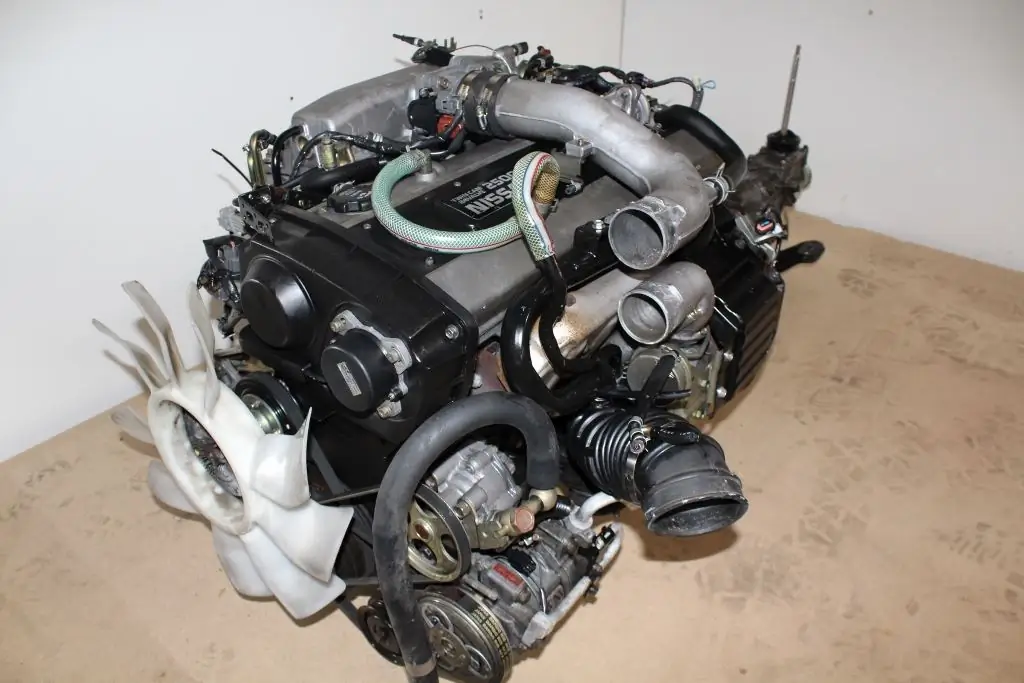
- RB25DE NEO. Develops 200 hp. With. at 6000 rpm and 255 Nm at 4000 rpm. Camshaft phase - 236/232 °, lift - 8, 4/6, 9 mm.
- RB25DET NEO. Power is 280 liters. s., torque - 362 Nm at 6400 rpm and 3200 rpm, respectively. The camshaft phase is the same, the lift is 8, 4/8, 7 mm.
For the first time these motors were installed on the R32 Skyline GTS-25.
Since 1993, RB 25 engines have been fitted with NVCS for better low rpm performance.
Electronics redesigned in 1995. The main change was the installation of ignition coils with built-in igniters. In addition, the DMRV, ECU, camshaft and throttle position sensors were replaced. However, series 1 and 2 are mechanically very similar. The only difference is that the camshaft position sensor shaft enters the exhaust chamber differently. Early second series engines had a traditional Mitsubishi camshaft position sensor, which was later replaced with a Black part due to a broken positioning tooth. The second series RB25DET received a ceramic turbine compressor wheel instead of an aluminum one.
In 1998, RB engines appeared with a NEO cylinder head, providing the best environmental performance. It featured valve lifters instead of hydraulic lifters, different camshafts with a Variable VCT solenoid, a higher temperature thermostat (82°C), specific coil packs and a redesigned intake manifold. So, the RB25 NEO received two intake manifold entries, and the bore diameter was reduced from 50 to 45 mm in order to increase air speed and reduce torque. Since the cylinder head combustion chamber is smaller, GT-R spec connecting rods and special pistons were used to compensate. The RB25DET NEO received a large OP6 turbine with steel compressor and turbine wheels instead of nylon plastic and ceramic ones, respectively. Some of them have an N1 type oil pump and its modified drive shaft from the crankshaft to avoid breakdowns at high speeds. Thus, NEO motors are significantly different from conventional RB25.
RB25DE without VCT used for R32 Skyline. RB25DE and RB25DET with VCT installed on R33 and WNC34 Stagea. The first R34s had regular RB25s, later Skylines and WGNC34s got NEO motors.
RB25 is close to RB20 in terms of fuel consumption, but provides better dynamics, thereforemany prefer it. The engines are also similar in reliability.
RB26DETT
This 2.6L engine was developed for the BNR32 instead of the originally planned RB24DETT due to the increased weight after the 4WD was installed. It was used on all Skyline GTRs from 1989 to 2002. It has an aluminum DOCH cylinder head. The phase of the camshafts is 240/236 °, the rise is 8, 58/8, 28 mm. Differs in a special intake design from other RB engines with six throttle valves instead of one (3 sets of 2 combined dampers). The RB26DETT is equipped with a parallel twin-turbo boost system based on two T25 ceramic turbos. Wastegates are used to limit pressure to 0.69 bar, although GT-Rs have a built-in limiter set to 0.97 bar.
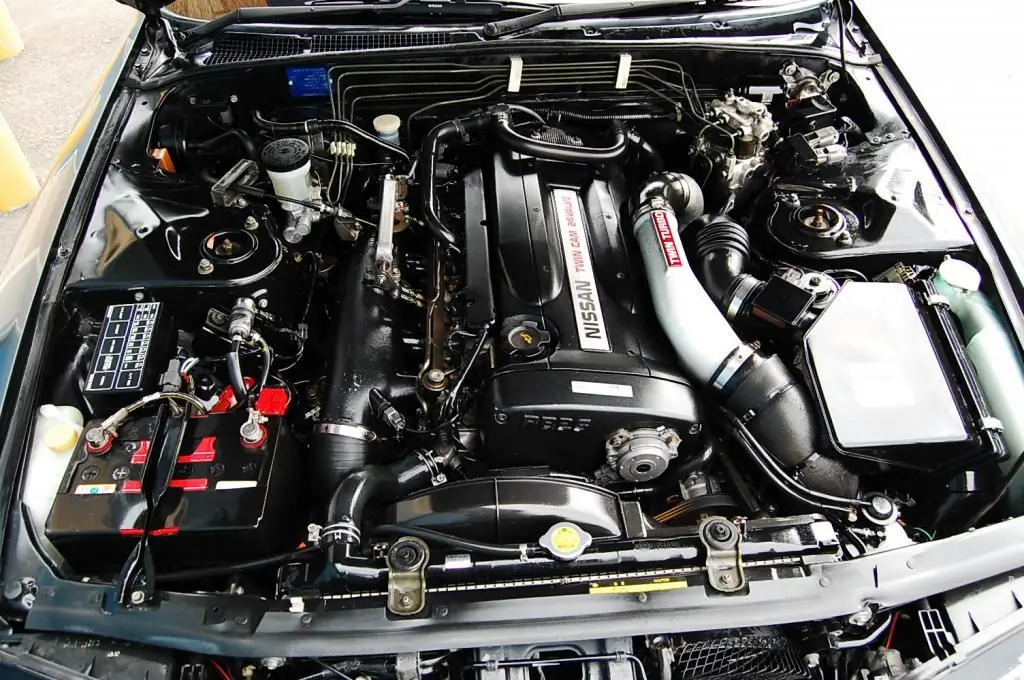
The following are some of the design features of the RB26DETT: 6-throttle intake, valve actuation by pushers, gaskets under the cups, timing belt drive, crankshaft position sensor displaces the exhaust cam and reports the position of the crankshaft and camshaft to the ECU, water-cooled and oil-lubricated turbines, OEM cast pistons with additional oil cooling channels under the crowns, oil jets, sodium filled exhaust valves, 8-counterweight crankshaft, I-shaped connecting rods.
The performance of early engines, according to factory data, is approximately 276 hp. With. power at 6800 rpm and 353 Nm of torque at 4400 rpm. On the latest RB26DETT, torque has increased to 392 Nm, while power has remained the same. Given valuepower is explained by the "gentlemen's agreement" of Japanese automakers (Jishu-kisei) 1989-2004, according to which the announced value of this indicator should not exceed 276 liters. s.
For BNR32 engines before 1992, the problem of oil starvation is typical, caused by a small interaction surface between the crankshaft and the oil pump. This leads to a breakdown of the latter at high speeds. On later RB26DETTs, this shortcoming was eliminated by installing a wider oil pump drive. In addition, extension cords for its drive are offered on the spare parts market. Later, another solution was found by Supertec Racing. Instead of the OEM flat drive system, racks were used to control the fuel pump gears, as on the Toyota 1JZ-GTE. This kit is available for most RB26 high performance oil pumps, including OEM, N1, Nismo parts.
The BNR34 has had its ECU retuned, some minor cosmetic updates and a T28 ball bearing instead of rolling bearing turbos. At the same time, the turbine wheel remained ceramic (steel parts had R32 Nismo, R32 - R34 N1, R34 V-Spec II Nur engines). It differs from the BNR32 and BCNR33 RB26 engines of the latest Skyline GT-R in the following features: a red cylinder head cover, a different emblem on the coil cover, a plastic timing gear cover, an unpainted intake chamber (probably a lighter casting), a Hitachi crankshaft position sensor with a different drive, built-in into coils with igniters instead of a set of igniters on the back of the coil cover,stainless steel downpipes, different diameter coolant and heater pipes on the intake side of the cylinder block, dual-mass flywheel.
In addition to Skyline GT-R RB26DETT used on ENR33 Autech GTS-4, WGNC34 Stagea 260RS on RS4 chassis and Tommykaira ZZII concept.
RB26DETT has become one of the most famous engines for its performance and tuning potential, as well as the Skyline GT-R engine. He is also very reliable. The problems include only the above-mentioned oil starvation on early engines and the typical failure of coils for the RB series about once every 100 thousand km.
RB30
This engine was produced from 1985 to 1991 in three versions:
- RB30S. Carburetor engine with one camshaft. Develops 136 liters. With. at 4800 rpm and 224 Nm at 3000 rpm. Installed on GQ Patrol and some Middle Eastern R31 Skylines.
- RB30E. SOCH system engine. Its power is 157 (153) hp. s., torque - 252 (247) Nm at 5200 and 3600 rpm, respectively. Used on the R31 Skyline (on South African cars develops 171 hp at 5000 rpm and 260 Nm at 3500 rpm) and VL Holden Commodore respectively.
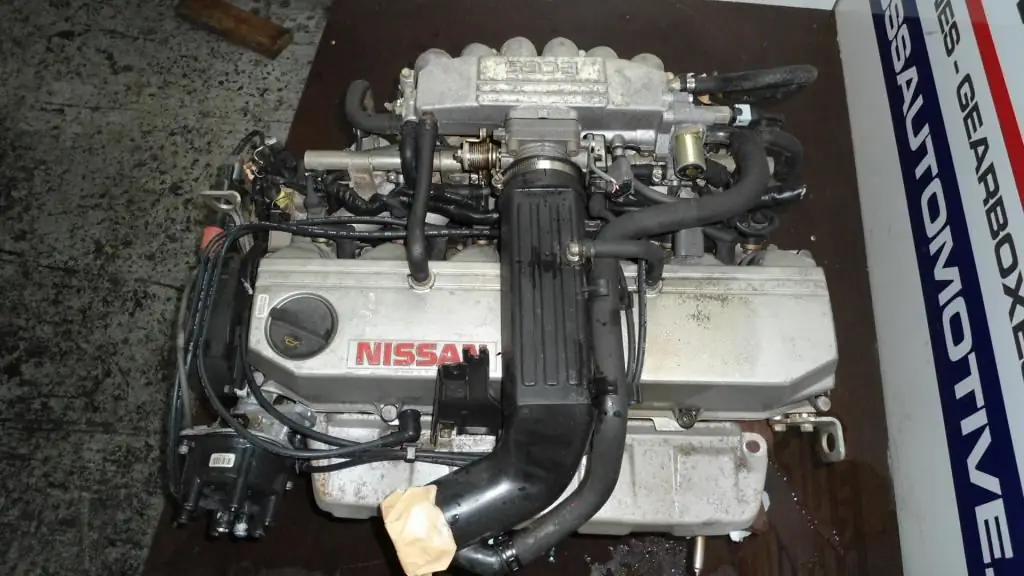
RB30ET. Turbocharged version of the RB30E. Develops 201 HP With. at 5600 rpm and 296 Nm at 3200 Nm. It was also installed on the VL Commodore
This engine was developed for Skyline and Patrol. It was purchased by Holden to be used as a replacement for a 3.3L 202 engine in a non-compliant Commodore.stricter environmental regulations, as it consumed unleaded gasoline. Moreover, Holden installed the radiator lower than on the Skyline, as a result of which overheating often occurred, leading to deformation, which was caused by air locks in the cylinder head. The rest of the motor is very reliable.
The Garrett T3 turbo variant features a lower compression cylinder block, a more powerful oil pump, 250cc3 injectors and a different intake manifold.
The RB 30 engine is still popular in Australia and New Zealand in racing, drag racing and swapping. It is almost never found at the local car market.
Special editions
REINIK made more than 20 RB 28 DET engines based on the R33 RB25DET for a special version of the R33 GT25t called the 280 Type-MR. This motor was tuned for high torque and developed 300 hp. With. and 354 Nm.

N1 - NISMO modified version of RB26DETT. The refinement was aimed at reducing the maintenance of the motor when used in racing. For this, the crankshaft was better balanced, taking into account vibrations at 7000-8000 rpm. In addition, the water and oil supply channels in the cylinder block have been improved. Pistons and upper piston rings have been increased to 1.2 mm. Finally, the camshafts and turbines were modified.
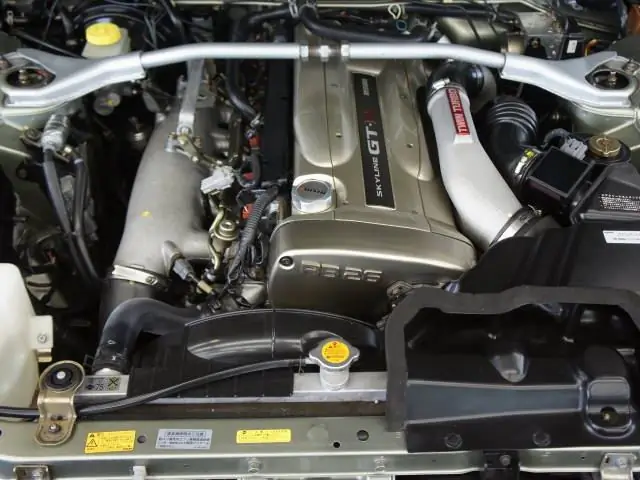
The N1 has Garrett turbines with steel turbine wheels instead of ceramic ones. This is due to the unreliability of the latter at high rotation speeds, causing large centrifugal forces (for example, whenincreased boost pressure). At the same time, the BNR32 and BCNR33 motors have T25 turbines, and the BNR34 engine has GT25. Theoretically, an N1 with increased boost pressure and a modified fuel system is capable of handling 800 hp. With. with standard cylinder block and SHPG.
Cylinder diameter is 86mm. It can be bored out by 1-2 mm. The N1 block is labeled 24U (standard block RB26DETT is 05U). It is compatible with all variants of this engine.
RB28DETT is based on the RB26DETT for the NISMO Skyline GT-R Z-Tune. It has a more powerful RB26 GT500 block modified by Nich. Productivity is 510 liters. With. and 540 Nm.
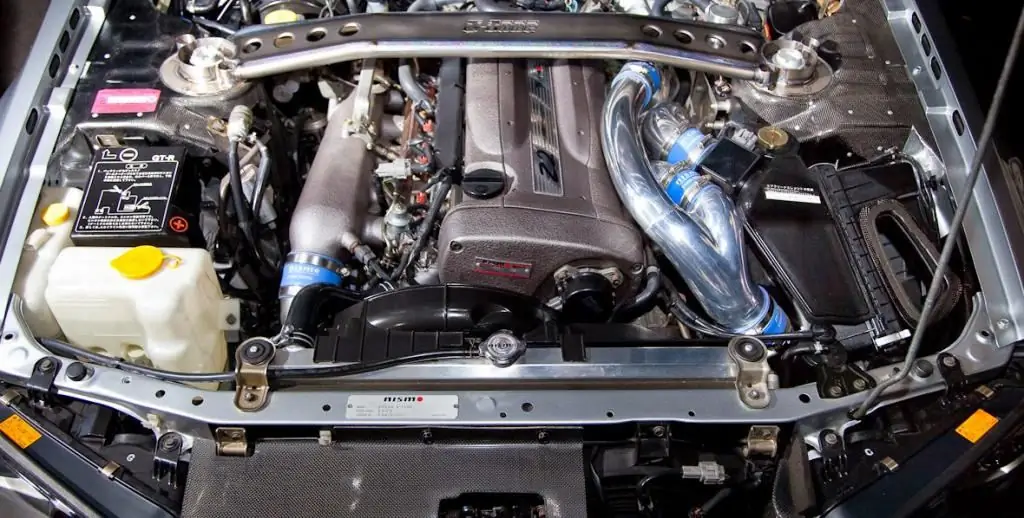
Also based on RB26DETT REINIK (GT500 and Z-tune designed in the same place) RB-X GT2 was created for R33 NISMO 400R. It features bored cylinders and increased piston stroke, resulting in an increase in volume to almost 2.8 liters. In addition, this engine has a reinforced cylinder block and cylinder head, a metal cylinder head gasket, forged connecting rods and crankshaft, pistons with cooling channels, N1 turbines with reinforced actuators, a high-performance air filter, stainless steel downpipes, a low-resistance sports catalyst. It develops 443 hp. With. at 6800 rpm and 469 Nm at 4400 rpm. RB-X GT2 used at Pikes Peak, 24h Le Mans.
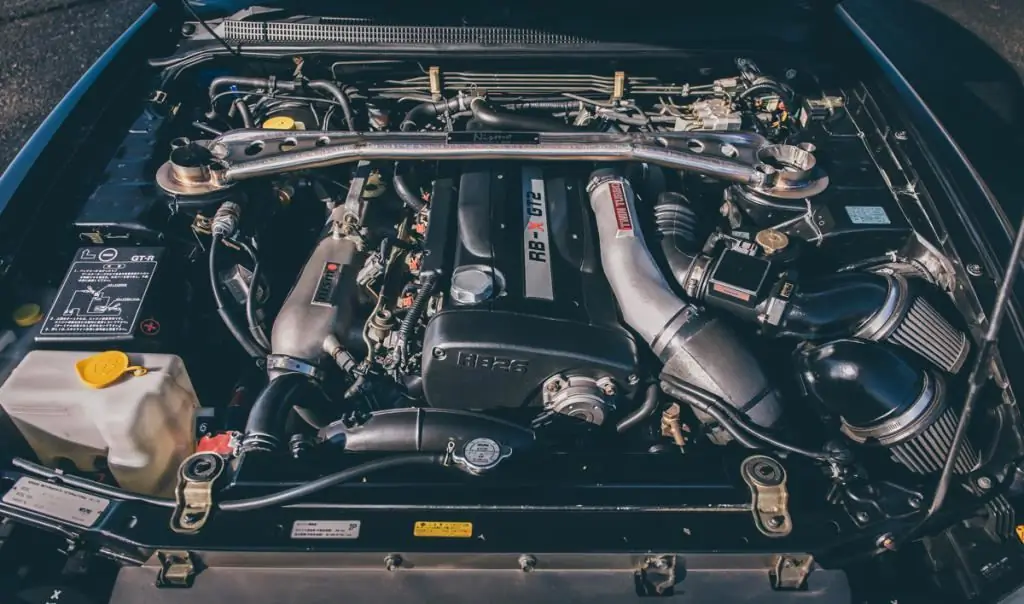
Nissan Special Vehicles Division Australia released two limited versions of the R31 with the RB30E featuring longer cam openings and a better-flow exhaust system. Installed on the GTS1 thisthe motor develops 174 hp. With. at 5500 rpm and 255 Nm at 3500 rpm. The GTS2 engine, in addition, has a special cam profile, a different exhaust, a ported cylinder head, an additional computer, so it is slightly more powerful: 188 hp. With. and 270 Nm at 5600 and 4400 rpm respectively.
For the Tommy Kaira M30, a special RB30DE engine was built based on the R31 GTS-R. It is a combination of an RB30E block and a modified RB20DE cylinder head. Its performance is 236 liters. With. and 294 Nm at 7000 and 4800 rpm respectively.

The RB30DET engines appeared in a similar way. They are combinations of a short block RB30E, a twin-cam cylinder head from some other Nissan RB engine and a turbine. So, there are options RB25 / 30 (bottom RB30E with top RB25DE / DET) and RB26 / 30 (top from RB26DETT). Cylinder heads from RB20DE / DET are not used due to different bore diameters (86 mm on RB30 and 78 mm on RB20). The Tommy Kaira had to use this upper in a modified form, because the RB25 was not yet released.
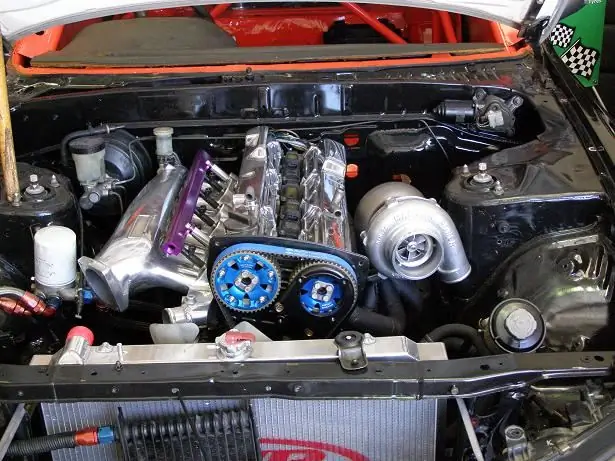
Please note that when using RB25 cylinder heads with VCT (R33, C34, WNC34), you will have to change the external oil supply and shift the oil galleries. Therefore, it is easier to use the top from the motors R32, C33, A31. VCT can be turned off. Sometimes it is necessary to reduce the oil restrictors in the block and modify the oil pump to avoid its destruction at high speeds.
Combining a twin-cam cylinder head with a standard RB30E bottom gives a compression ratio of about 8, 2:1, suitable for easymodified street motors. Therefore, this option has become popular in Australia and New Zealand as an alternative to converting an RB30E into an RB30ET using the latter's original attachments.
Despite the larger volume, these hybrids are inferior in power to the RB26DETT, as they do not have an internal block mount, as a result of which they are not able to spin as high due to vibrations around 7500 rpm. In compensation, the RB30DET has more torque at low rpm due to the larger piston stroke. However, with advanced balancing and elaboration, they are capable of reaching 11,000 rpm.
Stroker whales
There are many stroker kits for Nissan RB engines: 2.2, 2.4 for RB20, 2.6, 2.7, 2.8 for RB25, 2.7, 2.8, 2.9, 3, 3.15, 3.2, 3.3, 3.4 for RB26, 3.2, 3.3, 3.4 for RB30. Some of them are presented as tuning kits, others are obtained by using parts from other engines (for example, equipping the RB25DET with pistons, connecting rods, crankshaft from a GT-R will increase its volume to 2.6 liters with the same bore as the RB26DETT). It should be noted that motors modified using stroker kits are designated with indices similar to factory ones.
Recommended:
Electro-turbine: characteristics, principle of operation, pros and cons of work, do-it-yourself installation tips and owner reviews
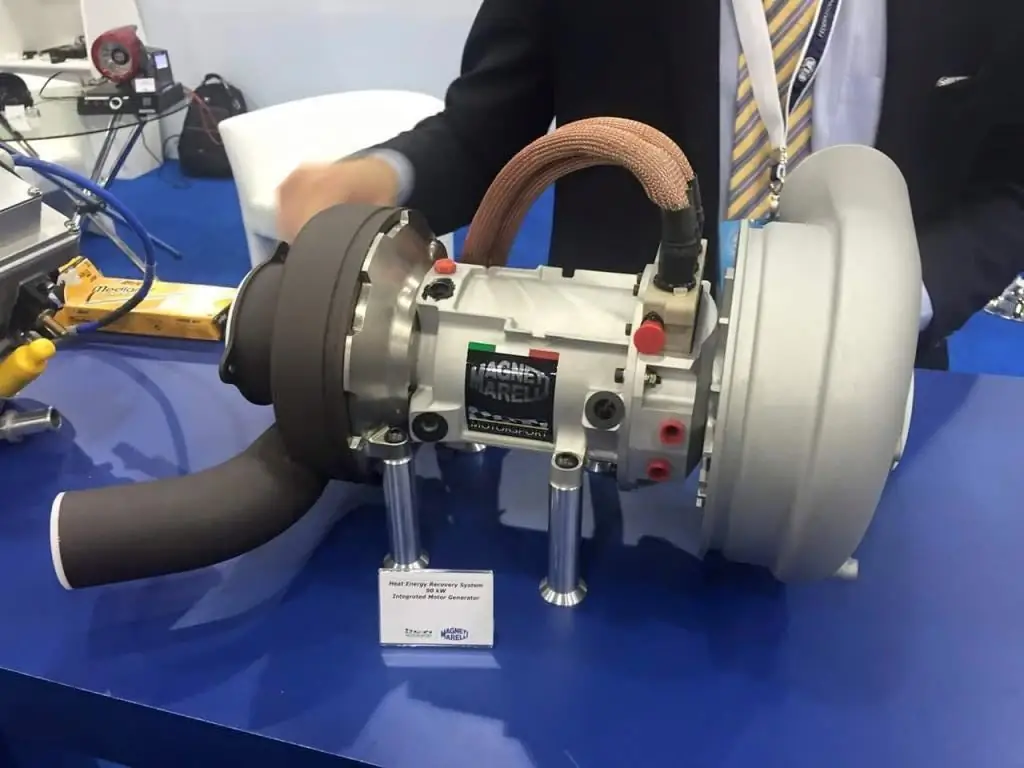
Electric turbines represent the next stage in the development of turbochargers. Despite significant advantages over mechanical options, they are currently not widely used on production cars due to the high cost and complexity of the design
Twin scroll turbine: design description, principle of operation, pros and cons

Twin scroll turbines are available with double inlet and twin impeller. The principle of their operation is based on the separate supply of air to the turbine impellers, depending on the order of operation of the cylinders. This provides many advantages over single-scroll turbochargers, the main ones being better performance and responsiveness
Composite crankcase protection: characteristics, principle of operation, pros and cons
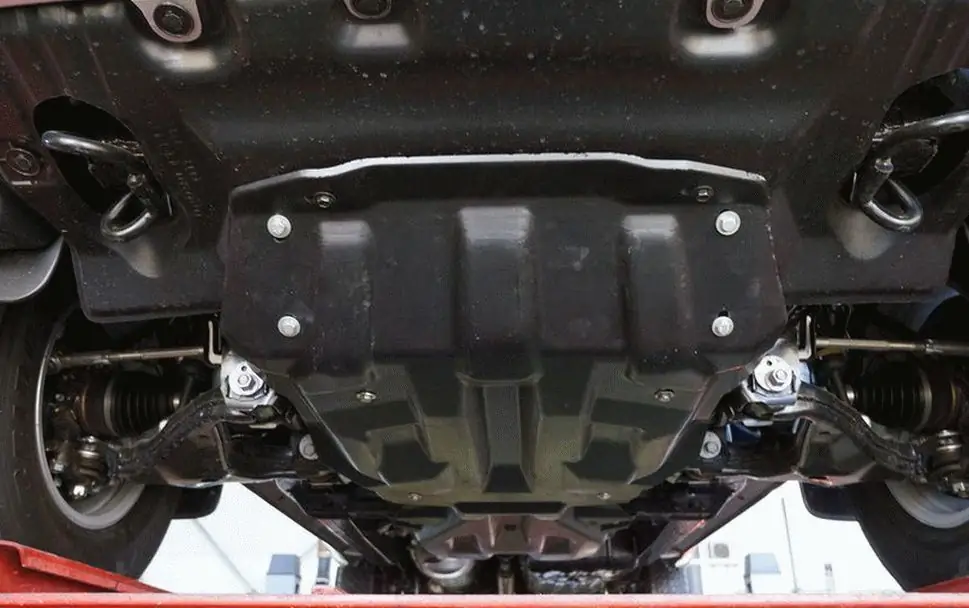
The need to install crankcase protection has not been disputed by car owners for a long time. The bottom of the car covers various important units, including the transmission, transfer case, engine crankcase, chassis components and parts, and much more. Hitting any obstacles can damage them. To avoid this, crankcase protection is installed - metal or composite
CVT transmission: principle of operation, owner reviews on the pros and cons of the variator
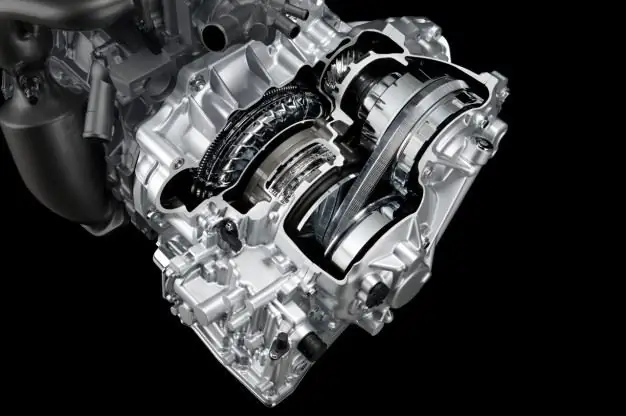
When buying a car (especially a new one), many motorists face the question of choosing a gearbox. And if everything is more or less clear with engines (diesel or gasoline), then the choice of transmissions is simply huge. These are mechanics, automatic, tiptronic and robot. Each of them works in its own way and has its own design features
"Chevrolet Cruz": the pros and cons of the car, specifications, equipment, features and owner reviews
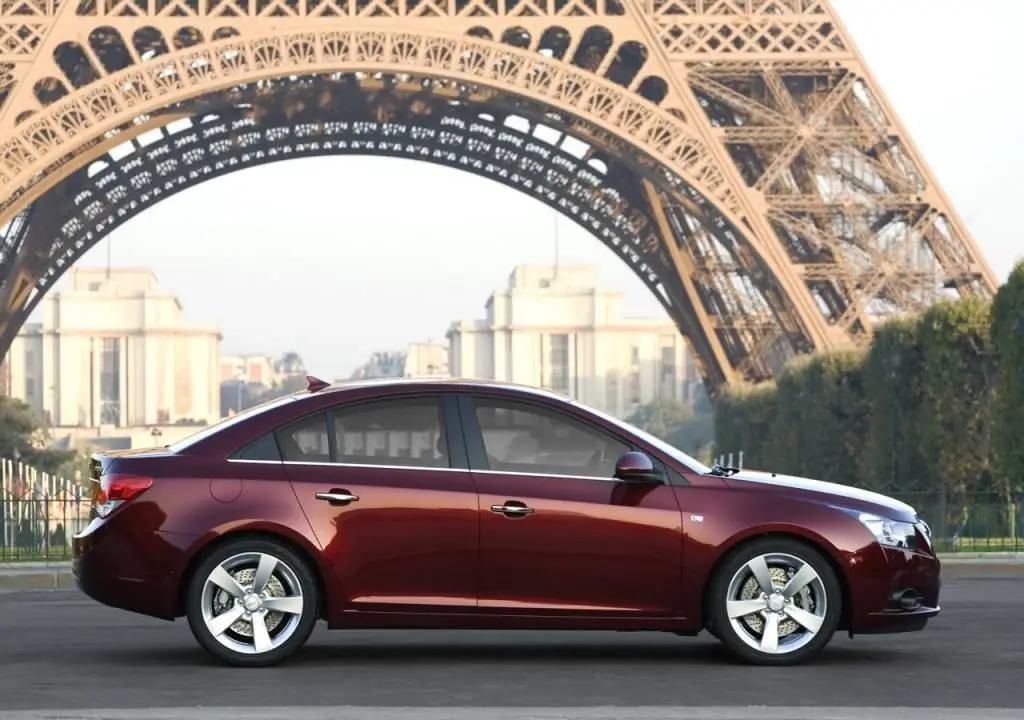
In Russia, Chevrolet Cruze hatchbacks and sedans were produced at the company's plant in St. Petersburg (Shushary). With a station wagon body, cars were produced at the Avtotor plant in Kaliningrad. Reviews about this car are somewhat contradictory, especially in the Russian automotive community. In this article, we will analyze the pros and cons of the Chevrolet Cruze

